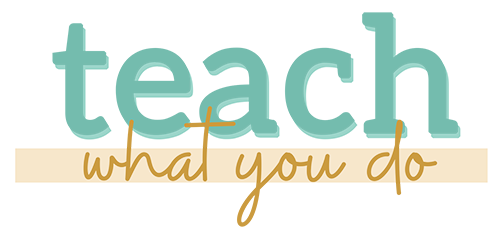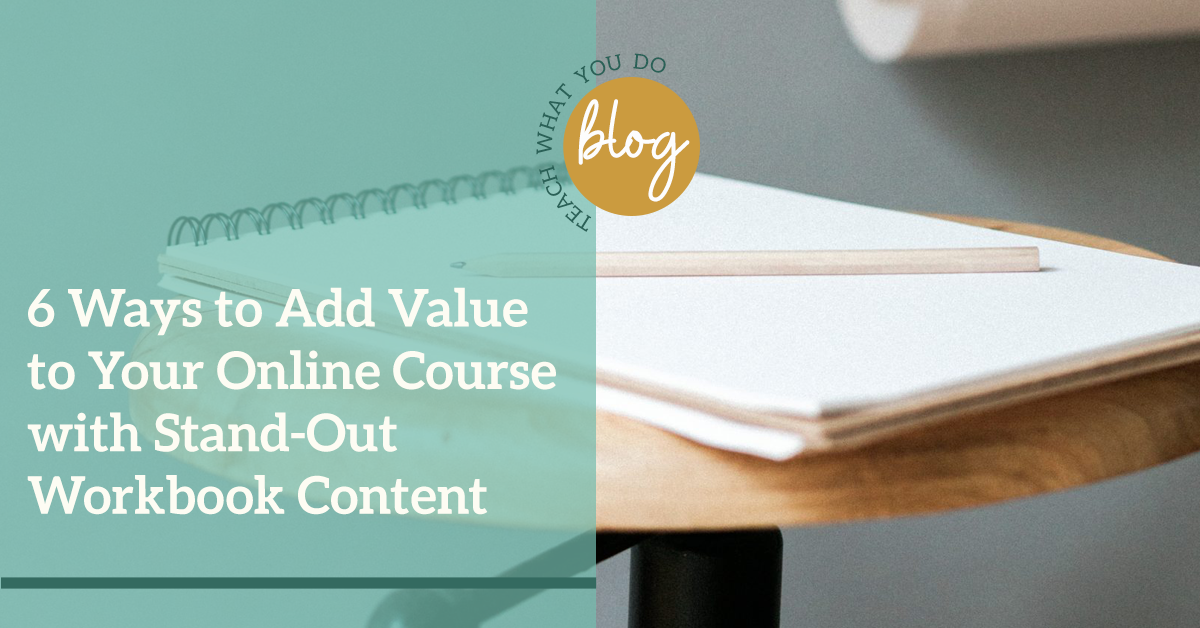
Workbooks are the get-it-done complement to your core lessons
Workbooks are a supplement to the lessons in your online courses. Done well, they give your students the reference materials and guides they need to complete lessons well.
When you’re deciding on whether to include a workbook and what to put into it, always make sure you’re giving true value. Do not include a workbook because you think you should. Do it because your students will be able to better execute on their own work with this workbook content.
Six types of content that you can put into a workbook follow.
1. Detail key lesson takeaways.
Your course lessons will teach important concepts and practices your students need to understand. These lessons might include background,
examples, and how-tos on those key concepts.
Providing a lesson “takeaway summary” gives your students an easy way to review what’s especially important about what you’ve just presented.
Two ways to present key takeaways are:
- In a list of key points. Optionally add one or two sentences to elaborate on each. This approach is good for a lesson that is comprised
of multiple points or steps. - As a longer written summary (like a short magazine piece) with a pullquote or key example box. This is good for when there are one or two overarching concepts being covered in-depth within the lesson. You’re not putting everything in here. Rather, it’s a summary of the key concepts.
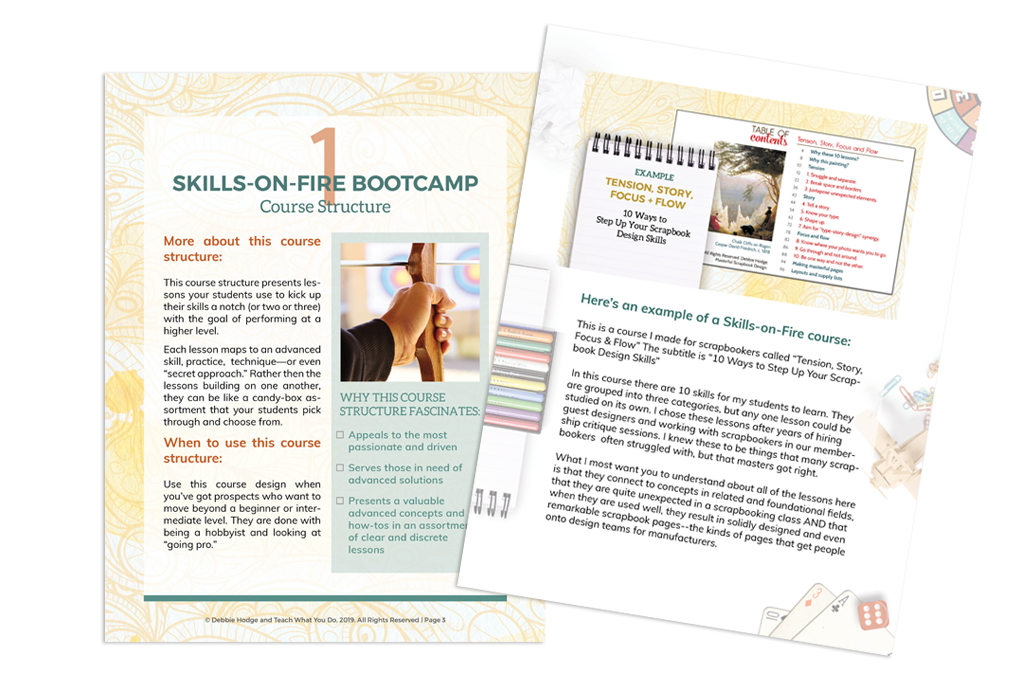
2. Provide a checklist of action items.
When there are several elements or steps or ingredients your students need to prepare, you can include them in a checklist.
This works when students don’t need an in-depth how-to, but, rather, a reminder of the actions to be taken. Presentation is as a
simple list with checkboxes. You might add one or two sentences to elaborate on each item.
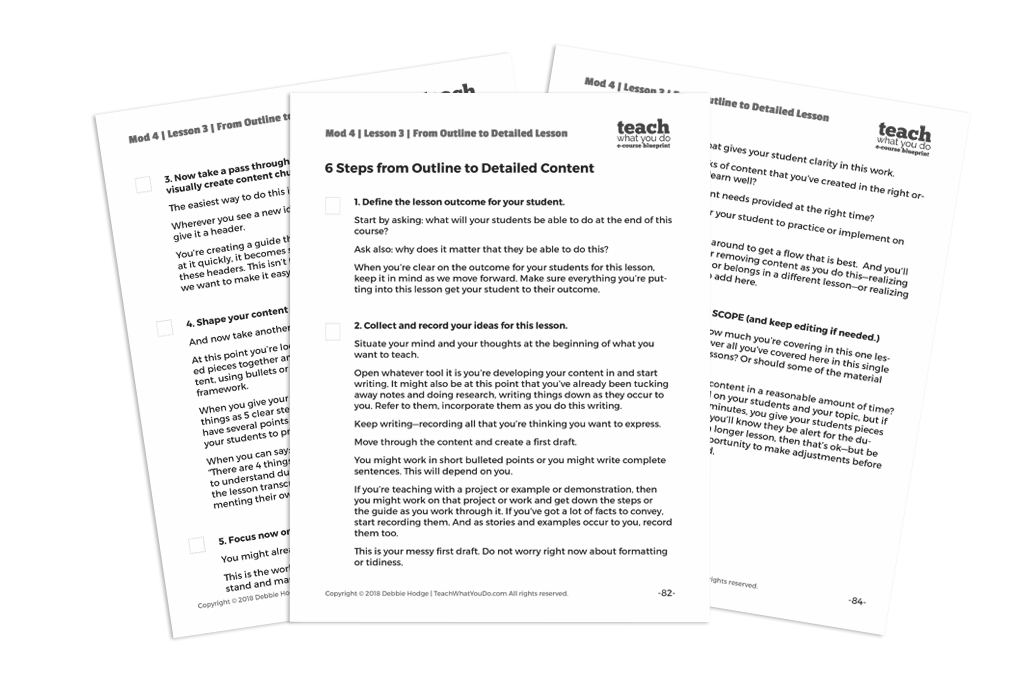
AN EXAMPLE: Here’s a checklist from the eCourse Blueprint workbook. It accompanies a lesson that presents a 6-step process for created detailed lesson content and scripts.
The actual lesson goes into more detail than this checklist. This checklist works as a handy guide for students to use while actually doing this work.
3. Supply step-by-step how-tos for work to be done.
This is the checklist expanded. Here you'll have more detailed how-tos for each step. You might also include illustrations or “call-out” notes.
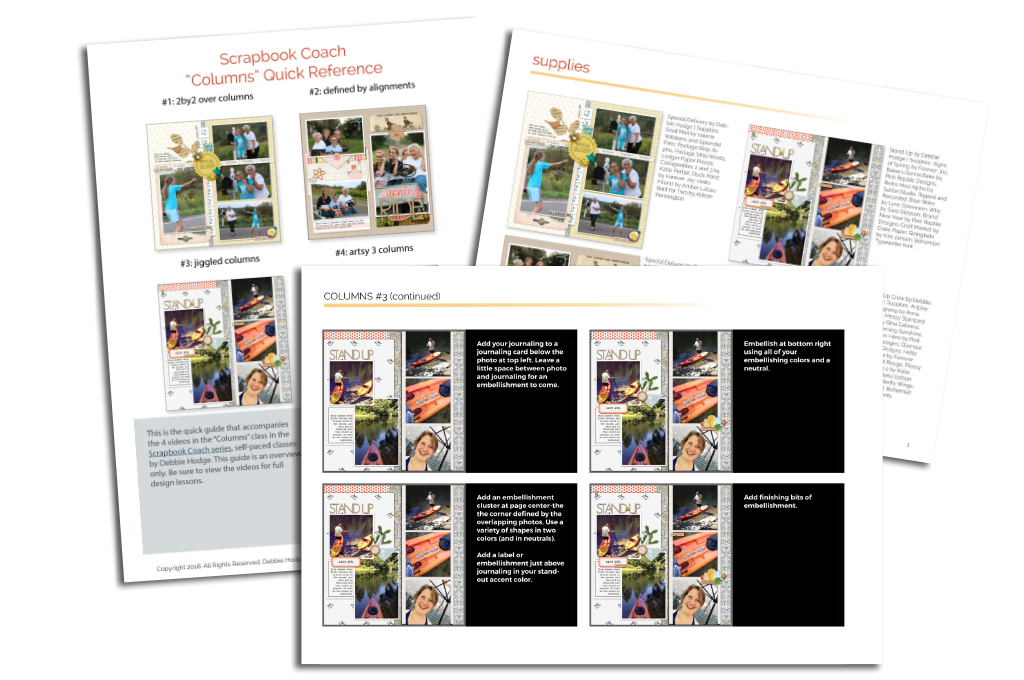
AN EXAMPLE: The example I’m showing here comes from my Scrapbook Coach course. Each video lesson showed the creation of a scrapbook page. To go with that video are guides that review the steps. I took screenshots from key milestones in the process and added numbered steps to the work. The actual lesson goes into more detail than this checklist. This checklist works as a handy guide for students to use while actually doing this work.
After watching the video, a student could then refer to the quick guide to recall the steps.
4. Enrich conceptual lessons with nitty-gritty details and case studies
With big courses (several modules with multiple lessons in every module), the scope of the work to be done can be quite extensive.
You could take an approach in which you provide upper level, conceptual instruction in the lesson–and then point your students to step-by-step
how-tos in the workbook. This could be an especially apt approach when different students will take different routes, and, thus, not all content applies to everyone.
Another approach would be to use your workbook to provide detailed examples and case studies that supplement your lessons.
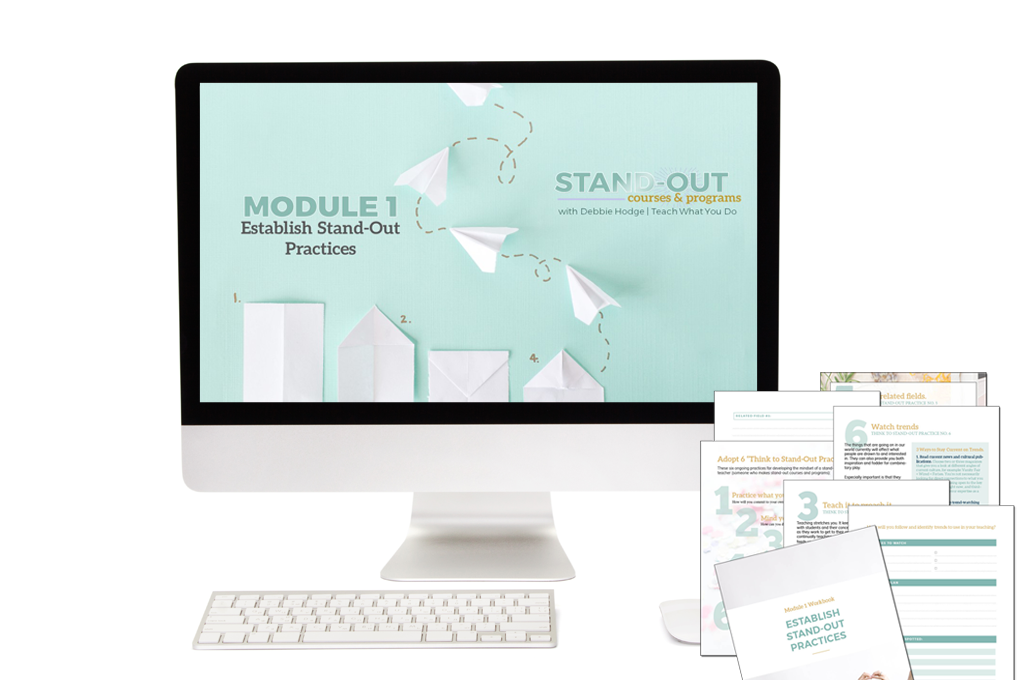
5. Provide a decision-making framework
If your students need to choose a tool or an artistic ingredient or a technique or a way forward in a coached situation, you can break down the choices for them and create a decision-making tool they can rely on to move forward.
Present key features or aspects to evaluate. Include pros, cons, and best usage situations. Perhaps pricing or rules or best combos. It depends on what they are considering / choosing / deciding on in order to move forward.
You might present this in a grid or list or decision tree–whatever form makes the most sense.
- We share a comprehensive table in the eCourse Blueprint to help students choose a classroom platform.
- In scrapbooking courses, we provide visual guides for choosing patterned papers or colors or fonts.
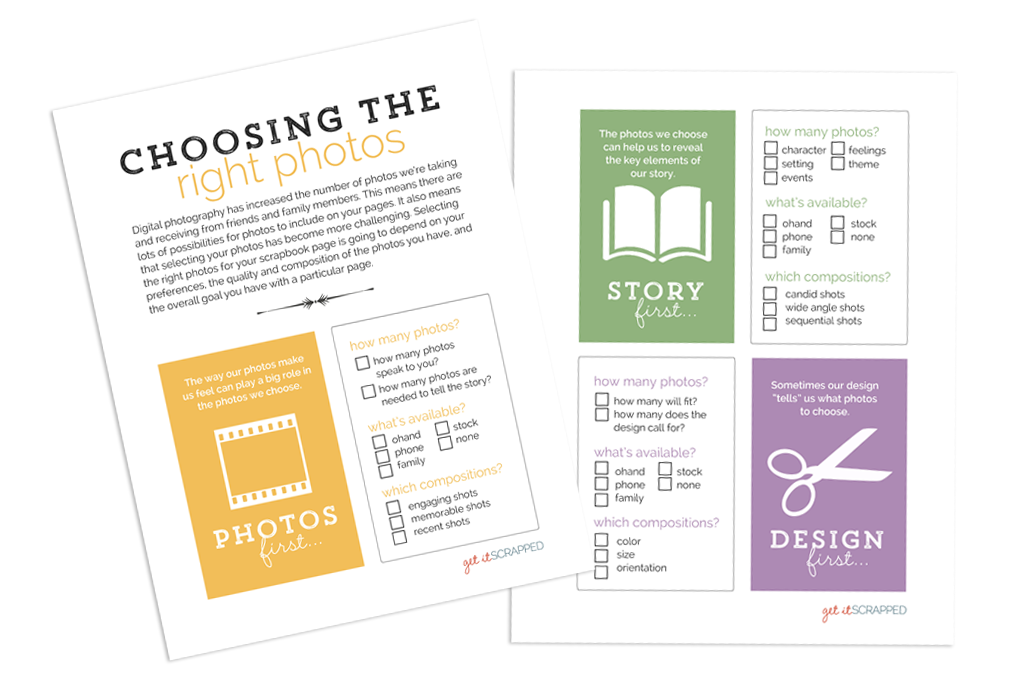
6. Give students work prompts that help them figure out what they need to do.
Map out the work your students need to do for the lesson they’ve just completed. Then, in the workbook, provide prompts and journaling or
notes areas that get them thinking through this work.
Much of the work I’m teaching my students at Teach What You Do requires thinking through a detailed set of evaluations and decisions.
Prompted guides are useful for this.
For example:
- If you’re going to price your course, you’ll need to work through understanding value offered, competitor pricing, the offer stack, your own budget and more. The lesson covers this and the workbook prompts journaling and decisions.
- To brand your course, you’ll make choices that require thinking through multiple aspects: brand personality, colors, fonts, and imagery. The lesson teaches this and the workbook prompts it.
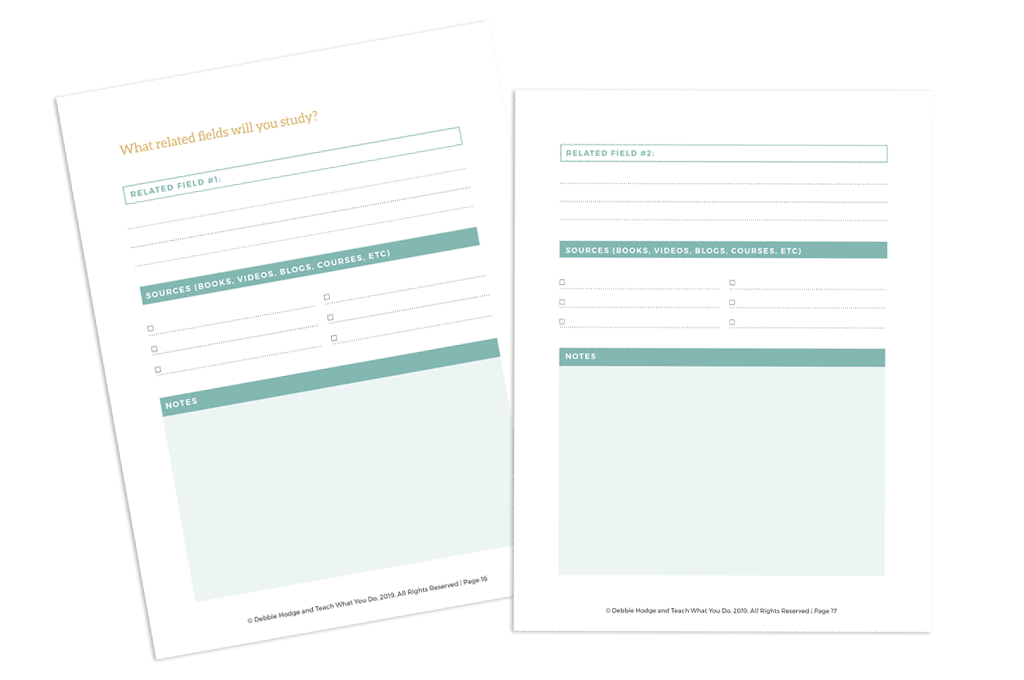
That's it. You've now seen 6 types of content you can include in your teaching workbooks:
1. Key Takeaways
2. Checklists
3. Step-by-Step How-Tos
4. Supplemental Information
5. Decision-Making Frameworks
6. Guided Work Prompts
Be careful to avoid workbooks that don't offer value or that generate extra work that's not really needed.
Instead, choose what most supports your students and enables them to move forward efficiently and well.
Download your workbook content guide.
Click here to get the content shared in this blog post in a pdf guide: teachwhatyoudo.com/workbooks
